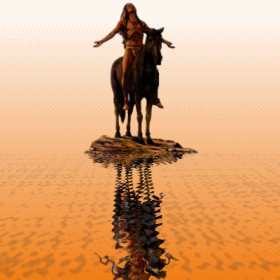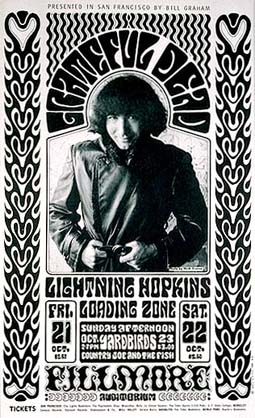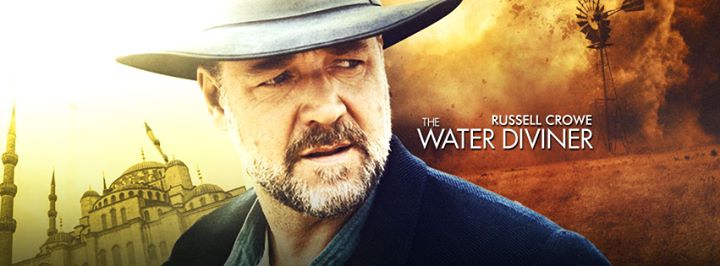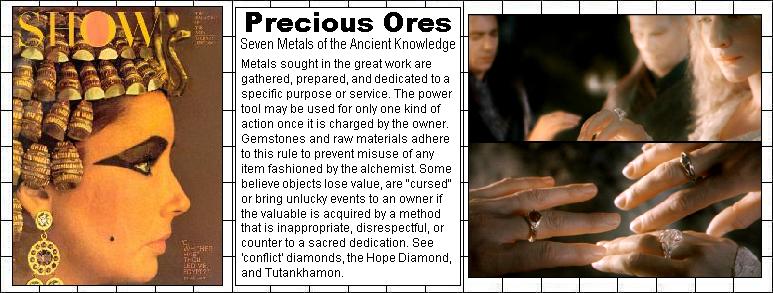There was a big period of freedom, which I always liken to God opening up the waves for Moses and then closing them again. - Paul McCartney
Alternative Culture Poems
Haight Street at Cole - Sun Temple corner
the three readers: this shop, I and Thou cafe across the street
and next door, The Straight Theatre
San Francisco Haight-Ashbury Footnotes
I seemed to see a ghostly, indistinct figure sitting in a whirling mass of black and brass for a moment — a figure so transparent that the
bench behind with its sheets of drawings was absolutely distinct; but this phantasm vanished as I rubbed my eyes.The Time Machine had gone.



SAN FRANCISCO
continued
The pivotal moment in the latter twentieth century was like a grain of sand inside a lustrous pearl. The death of President Kennedy gave the green light to elite groups who had long wished to launch sophisticated social engineering and develop public thought police teams within a layered sealed bubble. During the late fifties and early sixties the government was experimenting with mind altering drugs and techniques. They bled through into the mainstream.
Enter the alternative culture option heralded by philosophers, writers, masters of the arts: the era of new wave consciousness ready and able to open the door to The Aquarian Age archetypes on the horizon. While people were selected for mind altering experiments and testing, contained in controlled environments and used as guinea pigs, others were subjected to sensory deprivation to help inform space program enthusiasts asking, ‘What would astronauts experience in space, far away from Mother Earth and everything familiar to them all their lives?’ People fully supported Free Speech, Civil Rights, and all other methods of shape-shifting the USA launched during the Beat revolution. The Ecumenical Council/Parliament of Religions that encouraged different philosophic and religious groups to enter discussions for mutual benefit helped usher in an alternative culture that flourished, especially during the sixties.
High society in the Haight Ashbury was based on cultural contribution as opposed to rhetoric* - people dressed as they pleased, free from the "ordered vs hazard universe" debate. No one dressed down. The social playing field was 'equal opportunity' oriented - sunlight hours balanced in ideal ratio with moonlight hours. Not to digress, it should be noted somewhere for the record that, although exhibitionism was not generally frowned on, it was rated. Nudity was not the norm, depending on where you were - it might score low on the 'rock 'em scale [since anyone could remove their clothing] though not considered totally déclassé unless someone was strolling through the park with their parents at the time.
Everyone wore 'love beads' sometimes matching more than 10 strands at a time. Astrologers often strung horoscope necklaces so clients could remember the order of both lights and planets in their star charts. Some non-removable Native American silver work, such as bracelets, were worn - these embedded with white and blue turquoise. Homespun, up close and personal crafts were made to order, hand done, and excellent quality. No loose threads. Fresh baked breads and coffee table delicacies never wasted on any shelf, jewelry making and alchemy proudly strolled together. Many who worked in leather also found a haven of refuge in the Haight-Ashbury - even guitarists such as Jim Gurley [BBHC] worked sandal soles. Hemlines were short or long depending on what was happening. Men would sometimes wear eastern lined robes or a Nehru jacket. Capes were in. Tambourines considered optional.
The UK played a role in hip wardrobe induction since the spirit of Piccadilly Circus arrived with The Beatles and Rolling Stones, and Haight-Ashbury threads often reflected trends set by our friends across the pond. Publicity for the film Cleopatra transformed make-up, hair, and evening attire... once the Straight Theatre screened Black Orpheus the multi-cultural atmosphere became a constant.
In nature there are neither rewards nor punishments; there
are consequences.
-Robert Green Ingersoll
San Francisco set itself apart from other psychedelic movements, not only in appearance but mainly in the philosophic "road less traveled," at dawn with misty manna blessings from heaven. Conscious people were on to subtle avenues tracked by French artists from the 1800s, and the European psychic revolution at the turn of the twentieth century. Research in 'energy readings' of people, places, and things - traditional domain of the metaphysical elite - blossomed overnight to awaken pedestrians. Thorough, sophisticated, even technically measured observation skills evolved to a level of social science, with it's own local colour, fashion, and full, hip lexicon - still functional. Higher skull senses [ESP and radar] phased into systems previously dedicated to the standard five information harvesting agents. Physical and second sight, vital for forged locks on textural visual fields, still train attention on the microcosm as an infinitely rich and complex network.
Internet surfers unsnarl threads of confusion embedded in metaphysical topics: some sites compensate for bogus posts that are totally broken or tone lost. Newly spun threads for ancient formulae, unearthed to maintain the balance "as above, so below" in the Haight-Ashbury are rooted in sunlight and a spritely morning rag. Fine-tuning [Lucas Sound - CGI] provides the awakened audience an audio-visual 'whole package.'
Influences from across the pond added spice to the creative cauldron, bluegrass and blues-influenced guitar players. Pete Prown wrote, "… everything changed in 1965. Among the U.K.’s leading guitar proponents, radicals like Jeff Beck and Eric Clapton were making bold new noises literally with the Yardbirds and John Mayall’s Bluesbreakers, respectively. Not far behind them were blues expatriates like Peter Green who later formed Fleetwood Mac, future Rolling Stone Mick Taylor, and Ten Years After’s guitar wizard, Alvin Lee. Within two years, Jimi Hendrix was on the rock scene, mesmerizing fans with his outrageous image and surreal, psychedelic guitar attack. Within the span of time from 1965 to the end of 1967, these players effectively created the role of the guitar hero in modern rock bands and forever changed the sound of rock ‘n’ roll guitar."
Link Wray, an early influence on guitar greats John Cipollina, and Jimmy Page [aptly demonstrated on air guitar in the recent rock doc, It Might Get Loud] is included in the band of minstrels that came up with Scotty Moore, Bo Diddley, James Burton and early blues greats.
The annual Haight Street Fair or Autumn bluegrass fest in Golden Gate Park provide great opportunities to spend a day touring the local sites. The Grateful Dead house stands at 710 Ashbury, [on a hot chi or akasha line that runs toward Haight Street] channeling energy [solar] through the house into the street. Big Brother and The Holding Company's house at 1090 Page Street [magnificent pre-quake Victorian], cut down, was replaced with a plain building that appears to be a residence. The 'Both And', once near Haight and Divisadero, erased, perhaps is reborn in a different location.... the second Jefferson Airplane house, on Fulton Street near Stanyan, is elegant as ever. The mansion faces a delightful entrance to the park and, like The Charlatans home, was used for some posters, album covers, and publications.
note: check landmarks you're looking for online before planning a tour to be sure you're on the right track.Thunder and Lightning duo, taken from Yi King Hexagram The Arousing, Shock, Thunder: John Cipollina and Nick Gravenites
Link Wray and John Cipollina in Mercury's Children, part 260s Sound Dept.: Quicksilver Messenger Service lived in Marin County, across the Golden Gate and through the rainbow tunnel. No surprise to anyone they set up a rehearsal hall just off Haight Street, near the Mercury Temple site that adheres to a frequency set for The Transparency Wave and Muses from the Mountain Lake Wave. Quicksilver lightning, akin to a St. Elmo's Fire effect, are Mercury's Children. The band includes Gary Duncan and John [RIP] Cipollina. John Cipollina lived in a Sausalito houseboat for a short but colourful slice of life, as did Varda and Alan Watts, the spiritual guru for many on the bridge between the beats and hippie whirl. The Houseboat Summit meeting of minds was covered by Allen Cohen for The Oracle. Beats embraced the Buddha and were well known for their extravagant love of his wisdom teachings in Japan and India. Beat books, poetry, and stories pointed to Nirvana and Samadhi, the continued existence of being under different forms, and daily meditation as a way to self-realization.
Alan [RIP] Watts [combust Sun 14° Capricorn 51'and Mercury 15°13' Capricorn] eventually had his bones stolen, not atypical for a Buddhist with a compelling [Mars 11°Capricorn 28'] destiny vibe. His Moon 11°Virgo 36' trine Capricorn stellium was partially responsible no doubt. Kerouac also had a Virgo Moon, exactly conjunct his Ascendant. [see BEAT] If you're interested in Mercurial placement in star charts, note the force of Mercury in the star chart QMS and Sir Arthur Conan Doyle and some of the players who portray his 'great detective' Sherlock Holmes. Background about Mercury around the zodiac at Women Rock and Robert Redford's Spy Game.
What’s happening? Ahhh, brings back memories… There were three readers in the Haight [Ophiel did no sessions] and they were cloistered near Straight Theatre Sun and Mercury Temple power sites at the corner of Haight and Cole. The reserved table for the palmist at I and Thou café was next door to an astrology room at Straight Theatre.
My readings were most often for tourists who were shopping in one of the stores across the street from both; occasionally I read for Straight Theatre events, in the park, and sometimes for people at Enrico's in North Beach.
The NY Greenwich, pseudo-Strange effect, provided by Alpert & Leary, institutionalized the infamous, "Turn On, Tune In, and Drop Out" effect, increasing an influx of tourist traffic tenfold. There was no shortage of inquirers in San Francisco any way. Allen Cohen covered this phenomenal impact, brought on by a limitless infusion of pilgrims into our little corner of the world, in The Oracle.
Interested in their questions? Ask me. The most frequent inquiry: What's happening? Occasional curiosity extended to basic alchemical formulae and even concerning the seven ores.It was common for downtown nine-to-fivers from the financial district to try a 'pseudo-hip' mindset, wearing love beads, flower power jackets, or wigs from Market Street. The look was simple to copy from fanfare poster art – but could lose something in the translation. Everyone knew if guys were from the trading floor when they got on the dance floor - no one said anything. Tour buses began an invasion much less flattering - compared with the two waves of musical influx from across the pond. The mood changed in a dramatic sense as loudspeakers drowned out birdsong in the trees up and down the street. They were not 'disturbing the peace' according to 'authorities.'
right, Arwen's Garden
Sgt. Pepper was our grandest endeavour. It gave everybody – including me – a lot of leeway to come up with ideas and to try different material. John and Paul would write songs at home, usually – or wherever they were –and bring them in and say, ‘I’ve got this.’ The actual writing process was getting to be separate by now, but they’d come in with bits and help each other, and we’d all help. The great thing about the band was that whoever had the best idea (it didn’t matter who), that would be the one we’d use…
-Ringo
"Are you yet ready to admit that what you will and what you won’t are one and the same process? …That as the recognition of a figure requires a background, the sense of being “oneself” requires the apprehension that there is something “other” and external, and that the achievement of any kind of power, success or control cannot be experienced apart from a perpetual contrast of failure, surprise, and unpredictability?… That, therefore, all our pretentious projects for power over circumstance are a sort of joke or game which, if taken seriously, lead to mayhem and violence—expressing sheer rage at being unable to solve a problem which was absurd from the beginning?"
Alan Watts, Chapter On Selecting Vibrations -DOES IT MATTER? Essay on Man’s Relation to Materiality [Vintage Books 1968]
Several of 'them' [set up the intentional break from Buber's desired I and Thou relationship] operated a highly publicized vocal group. 'They' didn't seem to read [or understand], in alphabetical order: Hans Christian Andersen [02 APR 1805 Aries Sun 11°50, ASC Sagittarius 18°01, Jupiter in Sagittarius], Joseph Campbell [probably because he opposed nuclear power plants], Cassady & Kerouac, Herman Hesse [Sun in Moonchild, Ascendant Sag 20°10, Jupiter in Sag], Carl G. Jung, or J.R.R. Tolkien [03 JAN 1892 Sun in Capricorn 12°59, ASC Virgo 6°00, Jupiter in Pisces.] 'They' didn't like or understand Ron Boise, Jackson Pollock [28 JAN 1912 Aquarius 7°31 Sun, Jupiter in Sag], Vincent van Gogh [30 MAR 1853 Aries 9°39 Sun, ASC Moonchild], or mystic beat Buddhist Alan Watts any better. Shine a light on journalistic truth at The Hermit, Trump IX here.
The corner of Haight and Divisadero has changed many times - sometimes while you're waiting for the bus. The stop was across the street from 350 Divisadero, the little but loud Both And Jazz Club. Music poured out from early afternoon on into the wee hours of the morning. Jazz and blues greats from Miles Davis to John Handy and Thelonious Monk were lured from 1965 to 1972. John Lee Hooker and Lightning Hopkins could also sometimes be caught playing on the sidewalk, just sitting in a chair - this was before street musicians took visa and mastercard.
Beats would read poetry with musical accompaniment, most frequently in North Beach, with cross overs in theatre and comedy. The Mime Troupe & thespians in and around the Actor's Workshop, A.C.T. & The Magic Theatre for Madmen Only were established troupes. Comedy raged on at the Purple Onion and Hungry i. The Committee was, of course, considered San Francisco's finest!
Across the street from The Both And, during the late sixties, were recruiters with the Black Panthers office, passing out posters of black soldiers who did not receive a proper burial after they fought in Viet Nam. The war came home then.In the beginning, the atmospheric conditions in Haight-Ashbury were like 'the neutral zone.' Many contributors formed a cooperative effort to co-create a safe space where people could live without fear of intimidation, friction, or surgical removal by judgmental organizations. The blacklist and greylist were deconstructing – even confiscated William Burroughs would surface and usher in a collaboration of second string players for a slam-bang olio. The East Coast 'Gentleman's Agreement' had been after the Southern California community but, when The Grateful Dead and others refused the loyalty oath fiasco, they also began to decompose.
read more It's All in the Sauce.
Another illuminating tour of "The Coney Island of The Mind": City Lights and The Beat Museum, located in North Beach at 261 Columbus Avenue, corner of Columbus Ave and Jack Kerouac Alley. see Allen Ginsberg Ashes & Blues
more information about The Akasha Wave and Line of Grace here.
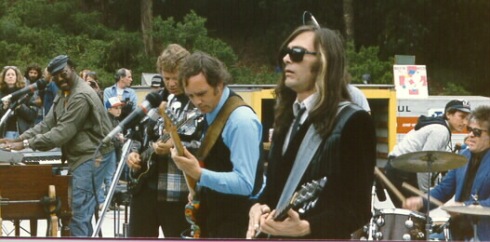
The Dinosaurs on stage in GG Park. [The film '68 catches a glimpse
of Quicksilver performing at a free concert in Golden Gate Park.]
Instrumental characters outside the Haight-Ashbury include: Ken Kesey [Sun 24°Virgo 07' with Virgo stellium & Gemini Moon] - Virgo is the sign of Initiation Mysteries [Ceres-Demeter] on a traditional western calendar. L. Ron Hubbard [13 MAR 1911 Pisces Sun @ 21°38, ASC Sag 20°28, Jupiter in Scorpio], Uri Geller [20 Dec 1946 Sagittarius Sun @ 27°31, ASC Scorpio 4°15]; 'Meditation,' [HH The Dalai Lama XIV, 06 JUL 1935 Sun 12°56 Moonchild, ASC 9°56 Moonchild] and, 'Zen,' entered mainstream English as Summer of Love roots took hold. Popular WWII books that were carried through North Beach coffee houses into the Haight-Ashbury included Buber's I and Thou and The Prophet, by Kahlil Gibran, never out of print since it was published in 1923. Foundational text lists all placed J. R. R. Tolkien, Heinlein, and Kerouac’s, On The Road as top hot reads, and anyone who knew Neal Cassady was clear the Jesuit conclusion that Moses is a composite figure requires deeper reflection. City Lights could not keep Joseph Campbell’s, Hero With A Thousand Faces on the shelves - they sold out on arrival.
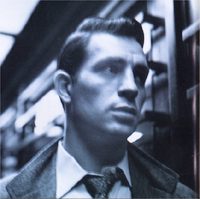
Jorma has a 22 Soul Urge, the indication of someone who wants to be the perfect builder, for the good and security of all. If raw materials for construction are words and sound, language and symbol, this vibe will probably add career interest in writing, musical composition, film structure, acting, and perhaps arguing a technical point of law for a client. Kerouac forces a link between his commitment to the karma of action with a powerful Mars and Pluto combination. Jack has a 7 Soul Urge - someone on the road to the ideal 'zone consciousness'; desire for silence and peace to live his inner life, wants to meditate upon his dreams of perfection. Number 7 signifies mastery in the chosen profession, when developed; also, possible ambassadorial station, oratory, poise, internal centering and a desire to expand the universe.
Return San Francisco introduction

Kesey page ‘further’ on yahoo tdn now history
highlighters from NEW AGE JOURNAL
KEN KESEY RAVES AGAIN
By Alan Reder
NEW AGE JOURNAL, November/December 1992
On the August day on which I begin reading Ken Kesey's new book, Sailor Song (Viking, 1992) - his first in nearly three decades - it's 107 degrees outside my southern Oregon home and I can see the withered patches in the nearby forest canopy, scars from an eight-year drought. In Portland and Seattle, they're rationing water. Meanwhile, this novel, by a man who was one of the true Buddhas of my generation, portrays a near future in which climatic catastrophes, ozone depletion, resource rape, and land development have advanced to the absolute precipice of irreversible apocalypse, and probably beyond. With typical Kesey magic, the marvelously bent characters climb right off the page and dance their whacked-out drama in front of me. But the future he augurs is too dismally believable and I'm shaken to my soles. Has Ken Kesey given up?
Ken Kesey, whose '60s novels One Flew Over the Cuckoo's Nest and Sometimes a Great Notion rang like great rock 'n' roll in my ears, in millions of our ears, while we were storming the barricades?
In my profession, you sometimes get to explore these things firsthand. A few weeks later, I've secured an interview with the '60s high-priest himself and I'm headed north on Interstate 5 to the Kesey farm just south of Eugene.
The landscape I'm rolling through, the Williamette Valley, is Kesey country all the way, and not just because marijuana has sometimes rivaled timber as an Oregon cash crop. Kesey's family moved here from Colorado when he was nine years old. He got his undergraduate degree at the University of Oregon in Eugene (he went on a wrestling scholarship), then moved south to enroll in Stanford University's creative writing program in 1958, where he studied with Larry McMurtry, Robert Stone, and Wendell Berry under mentors Wallace Stegner and Malcolm Cowley. After two novels, the legendary LSD-crazed cross-country bus trip with the Merry Pranksters 1964, and a marijuana bust for which he served time in 1967, Kesey came home to this valley to raise a family with his high school sweetheart, Faye.
I'm following Faye's directions now. They guide me off the freeway, down winding roads through sun-scorched pastureland, and past other farms until I reach the Kesey spread, a mostly flat, seventy-acre parcel where he writes, raises beef cattle, and launches occasional hell-raising excursions with old Prankster pals. On a telephone pole by the farm's entrance there's a yellow road sign with the black silhouette of a kangaroo and the words NEXT 5 KM. I decide this must be the place.
I've waited nearly a month for my spot along the Sailor Song publicity gauntlet, a long one because most media pundits doubted this writer had another novel in him. The spot is a narrow window between noon and 2:30 P.M., at which time Kesey has to disappear, so you can bet my heart sinks when - after my three-hour drive, the kind-faced man who greets me says my appointment is sleeping. But he reassures me - I am expected - and invites me in while he goes to rouse the subject matter.
As one might suspect, the house I enter varies somewhat from the traditional bucolic décor. The basic structure - an old red converted barn - is ordinary enough for these parts, but up where the hay loft used to be there's a big white star painted inside a blue circle that makes the building look like a fat cargo plane ready for takeoff. Inside, Kesey's home is appointed like a rustic version of Pee Wee's Playhouse. Across from the round wooden table where I take a seat, one living room wall is painted highway-construction-ahead fluorescent orange. Beneath several couches in the sitting room, the floor is covered in large swatches of primary colors, while a rainbow of Day-Glo hues coats the stairs at one end of the room. Only the kitchen wall of unfinished, aged lumber, and the pole-and-plaster ceiling mute the effect.
Call the décor Contemporary Kesey, by the man who also helped interior-decorate the craniums of much of my generation. I'm still trying to figure out just how to greet a living legend when it wanders out in a sleeveless tie-dyed shirt and loose-fitting white pants and offers me a meaty hand. Maybe six-foot-three, he has the heft and stature of an ex-tight end. Except for curly hair and sideburns that have gone white, Kesey at fifty-six looks much the same as he did in Prankster-era photos.
The previous six months have been so tumultuous, (Kesey says) largely because of local fears about invasion by the Great Unwashed - tens of thousands of migratory Grateful Dead fans. "The community [nearby Veneta] where [first proposed site of the original 'The Sea Lion' show] was going to happen tried to stop it," Kesey says in soft, measured tones, "and the way they talked about 'these people,' about these Deadheads, about all the problems they'll cause, and the theft that would happen and all the violence, they might have been Germans talking about gypsies." When Kesey shifted the location to his own farm, he persuaded folks that no security arrangements were necessary, and the crowd's behavior justified his confidence. People parked where they should, stayed away from the house, and kept their inebriant intake to manageable levels. "It was the same seedy, wild-looking bunch," he says, "but they understood."
Kesey asks a young couple passing through the kitchen if they'll favor him by throwing some hay at his cows, and then suggests that we go survey the site of Saturday's performances. A short walk from the house and we're in a grassy area big enough for a serious touch football game, surrounded on three sides by narrow stands of trees. And right here among these trees, its coat of many colors faded by time and weather, rests - and rusts - The Bus. The most famous '39 International Harvester ever, this vehicle had been christened Further [sic] by Kesey and the thirteen other neutrochemical astronauts who called themselves the Merry Pranksters.
"The Smithsonian called me about two weeks ago," Kesey reports as we pass it. "They still want it, the crazy fuckers. There's no way I'd move that." I'm confused, having heard on National Public Radio a couple of years ago that Kesey had restored the bus, loaded it with former Pranksters, and toured the country to promote A Further Inquiry, his nonfiction account of that fabled trip of trips. Clearly, this glorious automotive carcass hasn't touched asphalt in ages and probably never will again. "Oh, yeah," Kesey remarks casually, "NPR's still suspicious of us."
Kesey's got something to show me, he says, so we make our way toward a large lean-to outbuilding with hay for his cattle stacked against one side. Inside is a precise replica of the original Further, ready to roll, its LSD-peak paint job as bright and unblemished as if still wet. So THIS was the bus that toured. "Yeah," Kesey confirms, grinning.
CERES and The Mystery Play
'Ceres' her name can be translated as, 'Growth.'
A gilt statue of Ceres stood alongside one
of Mercury in the Forum.
CERES YOKED HER PAIR OF DRAGONS TO HER CHARIOT ...
AND BROUGHT THE CHARIOT TO TRIPOLEMUS AND
GAVE HIM SEED AND BADE HIM SCATTER IT
PARTLY IN VIRGIN LAND AND PART IN FIELDS ...
-Ovid, Metamorphoses [13] v 646

The Seven Hills of San Francisco
Temple of the Sun - intersection Haight & Cole-Schraeder where the Straight Theatre and I and Thou cafe were, location of stage for band and power, primary display for street festival, parade, and free concert
Temple of Jupiter - Lone Mountain [campus of USF now] - once an observatory
Temple of Venus - vicinity Alamo Park, overlooking The City [probably an early gathering place for people when they migrated west] - ideal post card photograph
Temple of Mars - southwest of Lone Mountain
Temple of Saturn - Buena Vista Park, facing Corona Heights
Temple of Uranus - edge of SF Presidio, upper end of Mountain Lake
Temple of Neptune - Golden Gate Park, Strawberry Hill outlook to the Pacific Ocean [this was a possible earthquake monitoring garden, with ancient horses and deer]
Temple of Mercury - probably Quicksilver Messenger Service rehearsal hall, one block up from Haight Street - also near Gabriel's spaghetti feed
Overlooking the Golden Gate from the Presidio are three hills understood to symbolize and end the Bridge of Kinvat, the etheric bridge extending from the Dog Star Sirius to Earth. The dog Sirius, alpha Canis Major, is one of the watchmen of the Heavens, fixed in one place at the bridge of the Milky Way, keeping guard over the abyss into incarnation. See faq page about the star Sirius and Harry Potter godfather Sirius Black. (according to one source, Tishtrya is the angel (Yazad) of the star Sirius.)



S T A R T M E U P



Santana - Master of the Latin Rock Sound
one of the best to emerge in the 60s psychedelic rock & roll community by SantanaSANTANA CONCERT 1986 Shoreline Reunion - An excellent rare concert, they really burn it up
Samba Pa Ti - Santana (Live in Mexico) 6:50
Bob Dylan - Carlos Santana "tombstone blues" 3:39
Everything's Coming Our Way lyrics



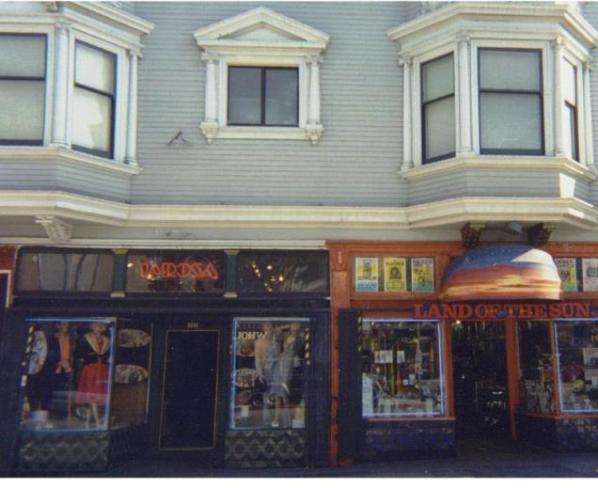



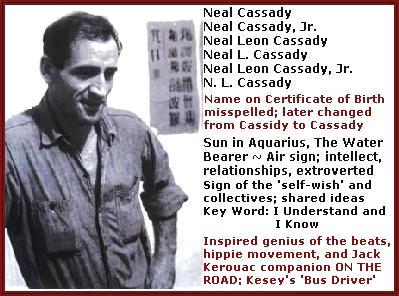


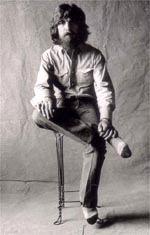
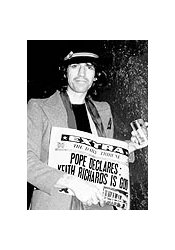 The Rolling Stones
The Rolling Stones



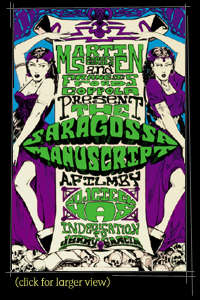 The Saragossa Manuscript
The Saragossa Manuscript
 R E D !
R E D ! most chilling moments in cinematic history
most chilling moments in cinematic history
 art
art 